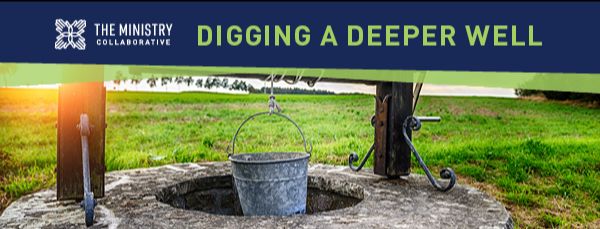Entering our local gym, we hear the same instructions every time. “Stretching helps prevent bad things and enables good things – lean into it!”
Despite this regular refrain, stretching remains an underappreciated practice in exercise, in life … and in how pastors and church boards guide their faith communities. Often, and especially right now, the focus is not on stretching, but on keeping things the same or breaking things apart.
There are two polar opposites: Staying still and Breaking. It’s easy to visualize each end of the axis, whatever the activity.
In between is stretching.
Stretching is growth. Extending our reach. Becoming more resilient, limber, and powerful. Stretching hurts a bit, and maybe leaves us just a little bit sore.
But then, tomorrow, we can stretch further than we could yesterday. Because stretching compounds.
If you’re afraid of breaking, the answer isn’t to stay still. No, if you’re afraid of breaking, the answer is to dedicate yourself to stretching.
We’re not suggesting that your board roll out the yoga mat or take Jazzercise classes together (but if you do, please send us a video). Stretching in the context of church means nurturing deeper faith.
Jesus’ Sermon on the Mount offers a discipline of stretching. Hungering and thirsting for righteousness, showing mercy, seeking to be pure in heart and to be a peacemaker – these are actions, not just words, that can stretch a congregation.
Think, too, of Jesus’ words in Matthew 5:
You have heard that it was said, ‘Love your neighbor and hate your enemy.’ But I tell you, love your enemies and pray for those who persecute you, that you may be children of your Father in heaven.
This way of living is not going to come naturally to most of us, individually – and often, it isn’t the first reflex of congregations. It takes work.
So do these words, just one chapter later:
But seek first his kingdom and his righteousness, and all these things will be given to you as well. Therefore do not worry about tomorrow, for tomorrow will worry about itself. Each day has enough trouble of its own.
Beautiful words. But to live them? That’s a stretch.
Baptismal vows taken by the congregation, promising to nurture the baptized, ask us to stretch in how we relate to one another. And so do God’s commandments that seek to order the chaos we experience much of the time. And so does the pattern of the early church in Acts. Vivid descriptions of sharing, caring, and resisting the pull of dominant culture. To live into these – takes stretching.
So, how? How can your church board lead your congregation past the instinct to stay still, but also past the understandable urge to break things apart?
In church life, as in faith formation, the best stretches are often achieved by leaning into the largest questions possible – and by letting go of as many assumptions as possible.
Below, American poet Marge Piercy (b. 1936) reflects on the need to let go in order to learn to love differently.
To have without holding
By Marge Piercy
Learning to love differently is hard,
love with the hands wide open, love
with the doors banging on their hinges,
the cupboard unlocked, the wind
roaring and whimpering in the rooms
rustling the sheets and snapping the blinds
that thwack like rubber bands
in an open palm.
It hurts to love wide open
stretching the muscles that feel
as if they are made of wet plaster,
then of blunt knives, then
of sharp knives.
It hurts to thwart the reflexes
of grab, of clutch ; to love and let
go again and again. It pesters to remember
the lover who is not in the bed,
to hold back what is owed to the work
that gutters like a candle in a cave
without air, to love consciously,
conscientiously, concretely, constructively.
I can’t do it, you say it’s killing
me, but you thrive, you glow
on the street like a neon raspberry,
You float and sail, a helium balloon
bright bachelor’s button blue and bobbing
on the cold and hot winds of our breath,
as we make and unmake in passionate
diastole and systole the rhythm
of our unbound bonding, to have
and not to hold, to love
with minimized malice, hunger
and anger moment by moment balanced.
Do you have a regular practice of stretching? What gets in the way of your stretching as often as you should?
When do you know that you are stretching well? When do you know you have gone too far?
What does Piercy’s poem suggest about the stretching that goes along with learning to love differently?
Can you think of a time, in the life of your church, when you as a congregation have successfully stretched without breaking? What made that possible?
Can you think of a time when the congregation stretched too far? What went wrong?
Where in your church is there the greatest need to stretch right now? What is keeping that from happening? What assumptions are getting in the way? What larger questions could you as a church board ask yourselves, to start limbering things up?








No Comments